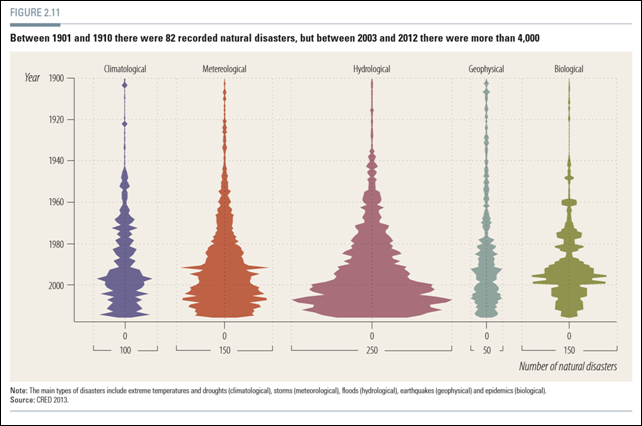Graph of the Day: Number of natural disasters, 1900-2012
(UNDP) – More frequent and intense environmental disasters are destroying lives, livelihoods, physical infrastructure and fragile ecosystems. They can impair human capabilities and threaten human development in all countries— especially in the poorest and most vulnerable. Higher income and socioeconomic status are associated with greater ability to absorb losses and higher resilience. Women, people with disabilities and racial and ethnic minorities may face greater barriers to recovering from disasters, partly because they have fewer personal assets and unequal access to support. Children, women and the elderly are particularly vulnerable. Natural disasters are increasing in frequency and intensity. Between 1901 and 1910 there were 82 recorded disasters, but between 2003 and 2012 there were more than 4,000. Even allowing for better recording, the increase is substantial. Particularly worrying is the much greater incidence of hydrological and meteorological disasters (figure 2.11). Although fatalities from natural disasters appear to be declining, the number of people affected is increasing. The frequency and severity of heat waves, floods, droughts and heavy precipitation have been linked to climate change. These extremes inflict exceptionally high economic and social costs. Moreover, there is growing scientific evidence that human action is responsible for warming the atmosphere and oceans, rising sea levels and some climate extremes. Global warming increases the likelihood of severe, pervasive and irreversible impacts. So, some of these weather extremes could be potentially prevented, or at least lessened. Climate change and environmental degradation are major threats to human development. Action to reduce these vulnerabilities, including a global agreement on climate change negotiations, will be fundamental to securing and sustaining human development.
